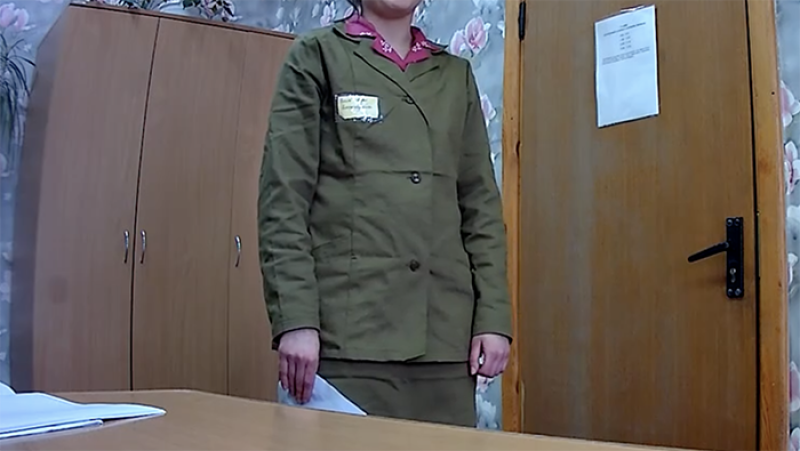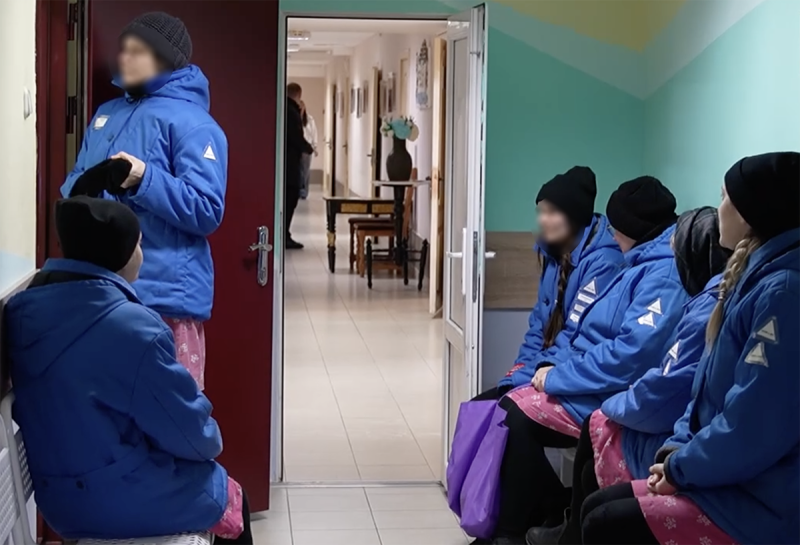"I still have a scar on my foot from the shoe." How colonies regulate women's appearance
Today in Belarus 1,253 women who are convicted in politically motivated cases. 288 of them were sentenced to imprisonment. 153 of these women are now political prisoners: 122 of them are in penal colony No. 4 in Homieĺ, three of them are in penal colony No. 24 in Zarečča. Women in penal colonies have strict conditions of imprisonment, which affect their appearance. Moreover, their appearance is regulated and becomes another reason for repression. Viasna asked political prisoners how appearance is regulated in penal colony No. 4 and asked lawyers to comment on it.
When women arrive in the colony, the clothes they were wearing are taken away from them. They are allowed to keep only a few things, and even those are black, although the instructions say that dark green, dark blue and brown can be worn. Now even non-black socks are being taken away, although other colors were allowed before, so there are people in the detachments who wear colored socks, for example.
In return, they let you put a pink dress on and then they give you all the uniforms to sign. Most of the uniforms are pink. They also give you a coat: you have to wear it when you are announced. It is very heavy, but it is not warm at all. If the term is more than a year, they often give you new clothes; if it is less than a year, they may give you worn clothes.
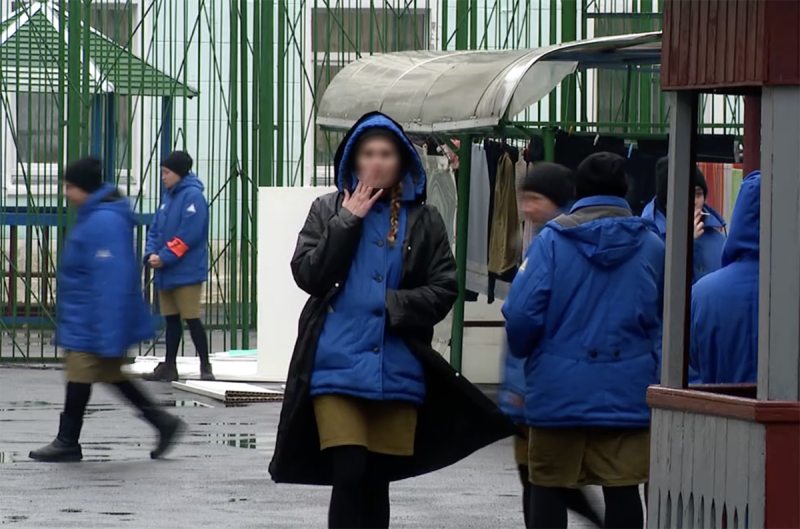
- This is what women's clothing looks like in penal colony No. 4. Here and below, the pictures are taken from state television films
- They used to give us scarves to tie around our heads and necks," said one of the political prisoners. - That kept us a little warm. Now they have started to give us hats, which we call "gondons" as they stick tightly to the head, they have no lapels, the neck is bare, the collar cannot be raised. The neck is completely bare. It was very cold in them.
Shoes in the colony are not very comfortable: rough boots, flip-flops, and flat-soled shoes - they are called "stockings". Heavy shoes cause blisters. Prisoners often have to stand outside for medical examinations in such clothes, which are often unsuitable for the climate. Winter shoes are not insulated inside, so they are quite cold. As they are short, feet sometimes get cold.
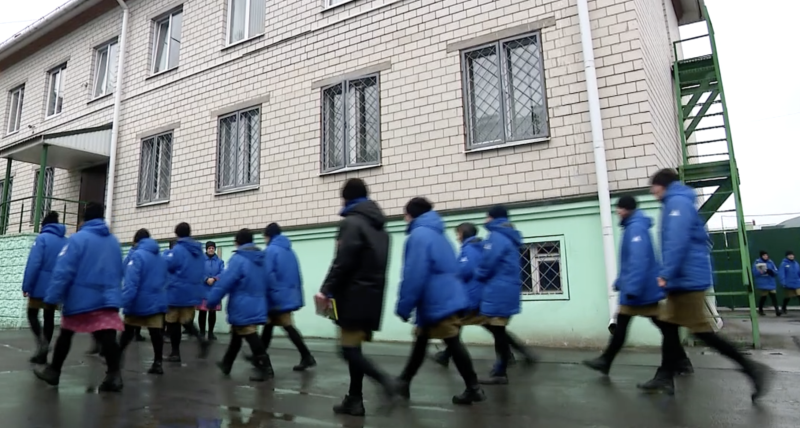
- This is women's clothing in Penal Colony No. 4. The pictures show pink and dark green standard dresses that are issued to women in the colony
- Shoes and clothes can be given out of size," recalls one of the political prisoners. - I was given winter shoes that were a few sizes too big, and I wore them once, because the rules required it for one of the events in the colony with the participation of the administration. The rest of the time I had my own shoes. I wore them for half a day, and my foot was wiped off. And not at the toe or the heel, but where the material is on top, at the level of the ankle. I still have a small scar on my foot from that.
Political prisoners say that the clothes are sewn in a local garment factory, along with clothes for men's penal colonies and police uniforms.
- It is normal for women's colony clothes to have defects compared to the police uniforms," says one of the political prisoners. - They buy fabrics in short supply, so almost any defect, except for some holes, can be skipped. When the police uniforms are sewn, you can't do that. Therefore, it often happens that the patterns are not always correct.
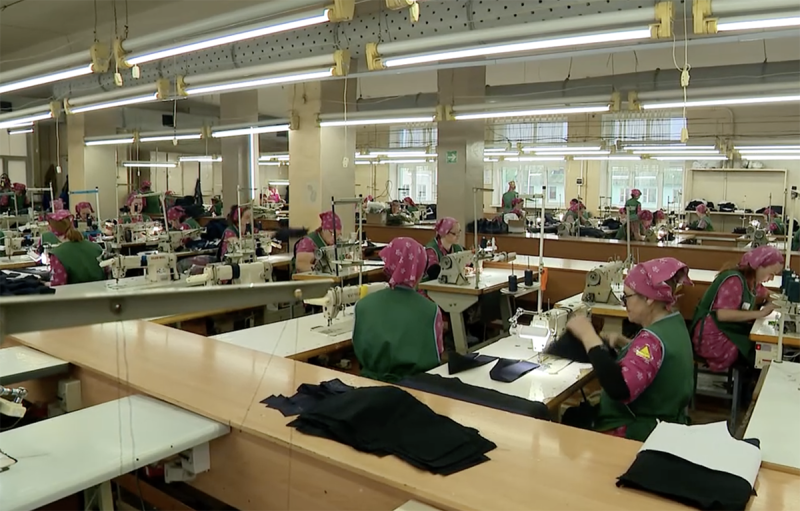
- Dressed in these uniforms, the women work at a garment factory. Among other things, they sew uniforms for prisoners, police, and colonial officers.
It is possible to hand over things, but they must be in full compliance with the instructions, first of all only black items are accepted. For example, gloves or scarves are not issued in the colony, so if relatives did not give them, we have to do without them. To solve this problem, the women do it in different ways: for example, one of them came up with the idea of tying a pair of pantyhose instead of a scarf.
What does the law require prisoners to look like?
We asked Viasna Legal Services how the appearance of women in prison is regulated.
- What are the national rules on the appearance of prisoners?
- The appearance of convicted persons is regulated by the Criminal Executive Code (hereinafter - CEC), the Internal Regulations of Penitentiary Institutions and the Decision of the Council of Ministers No. 632 of April 28, 2010.
According to Part 1 of Article 94 of the CEC, persons serving their sentences in correctional institutions shall be provided with necessary living conditions in accordance with the rules of sanitation and hygiene. The norms of the provision of clothing are established by the Council of Ministers of the Republic of Belarus in agreement with the President of the Republic of Belarus. In accordance with the Rules of Internal Regulations of Penitentiary Institutions, approved by the Resolution of the Ministry of Internal Affairs of the Republic of Belarus No. 174 of October 20, 2000 (hereinafter - the Rules), convicts are provided with three hot meals a day, clothes, underwear and shoes, as well as bedding in accordance with the established norms (paragraph 349). In addition, the Rules stipulate the obligation of convicts to wear clothes of the established pattern, and in special-regime correctional colonies - special pattern, breastplates and arm bands for convicts according to Annex 4, except for convicts held in correctional colonies-settlements (para. 57.8).
Decision No. 632 of the Council of Ministers of April 28, 2010, establishes the standards of clothing for convicts serving sentences in correctional facility.
|
Women are issued with:
|
- Do norms of this type violate human rights?
- The colony administration applies the norms widely. Thus, it puts pressure on the prisoners and holds them responsible for malicious disobedience to the lawful demands of the administration in case of wearing clothes not in accordance with the established form. In winter, prisoners sometimes freeze, and in summer, despite the heat, they cannot undress. Sometimes such suffering can be considered cruel, inhuman or degrading treatment or punishment.
- How is this reflected in international norms? How do they relate to national ones?
The Standard Minimum Rules for the Treatment of Prisoners state that prisoners should be provided with clothing appropriate to the climate and capable of maintaining satisfactory health.
|
NELSON MANDELA RULES Clothing and bedding Rule 19 1. Prisoners who are not entitled to wear their own clothes shall be provided with clothing appropriate to the climate and capable of maintaining their health in a satisfactory condition. Such clothing shall not be of an offensive or degrading nature. 2. Clothing should be kept clean and in good repair. Washing and changing of fresh linen shall be provided in accordance with hygiene requirements. |
National legislation does not require clothing to be suitable for the climate and to maintain health in a satisfactory condition.
- From a legal perspective, how can you characterize what penalties are given for inconsistencies in appearance?
- Convicts are obliged to wear clothes of the prescribed pattern and form. For non-compliance with the internal regulations, the convicts are brought to disciplinary responsibility. If a convict wants to take off his clothes or unbutton them on a hot day, he will be held responsible for breaking the rules. The punishment may include placement in a cage or disciplinary punishment: reprimand, deprivation of visits, placement in a SHIZO and others (Article 112 of the Criminal Enforcement Code). If a person is brought to disciplinary responsibility several times during a year, he/she may be held criminally liable for malicious disobedience to the lawful demands of the administration of the correctional facility under Article 411 of the Criminal Code and added sentence.
For example, an excerpt from one of the sentences:
|
By the verdict of the district court K. was convicted for malicious disobedience to the lawful demands of the administration of the correctional facility (Article 411 of the Criminal Code). According to the verdict, K. deliberately, wishing to maliciously disobey the lawful demands of the administration of the penitentiary institution "Penal Colony", contrary to the established rules of serving the sentence, within one year from the date of imposition of a disciplinary penalty in the form of transfer to a cell-type room allowed malicious disobedience to the lawful demands of the administration of the penitentiary institution " Penal Colony", expressed, inter alia, in the following: On March 13, 2019 at 20:05 K., held in the cell of cell block No. 18, violated the dress code for convicts held in the SHIZO: he was in the cell without a jacket with a breastplate, he did not comply with the lawful demands of the representative of the administration of the penitentiary institution "Penal Colony"- controller M. to stop violating the dress code, at 20:30 minutes, during the repeated rounds he continued to walk in the cell without a jacket with a breastplate, thus violating subparagraph 57.8, according to which convicts are obliged to wear clothes of the established pattern. |



